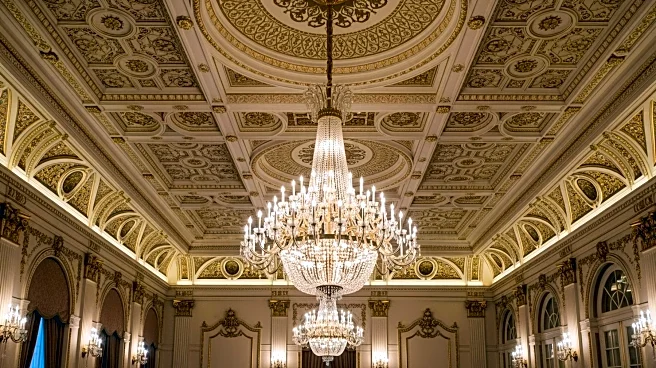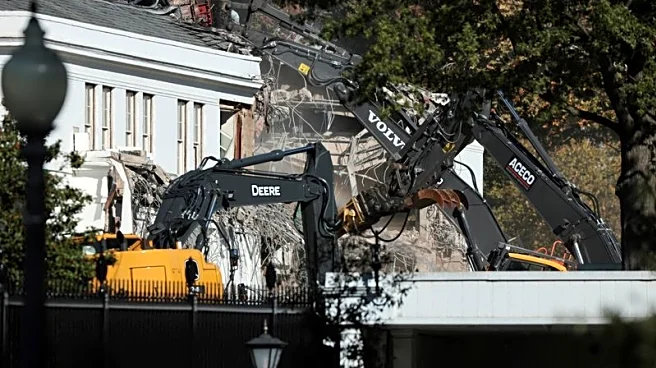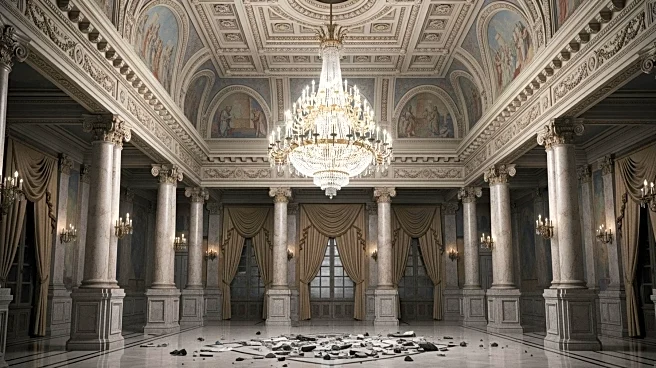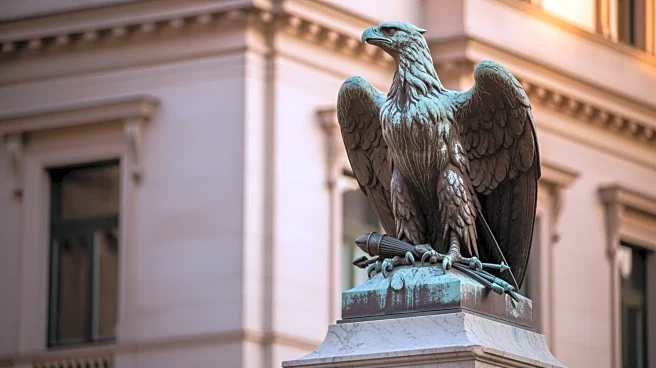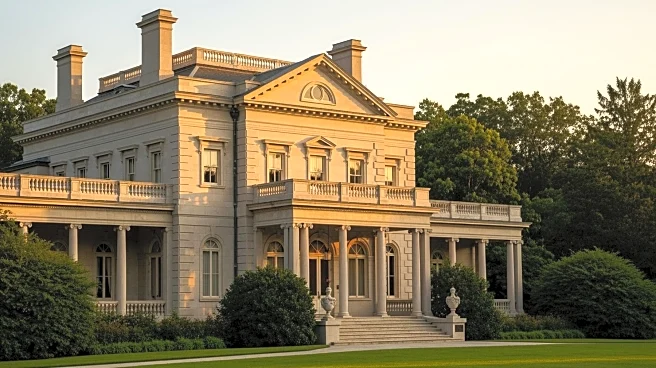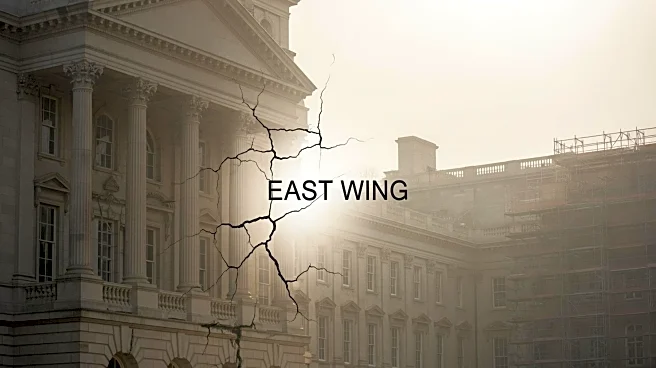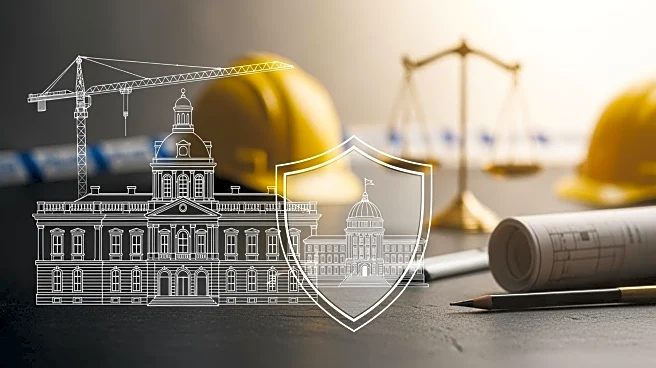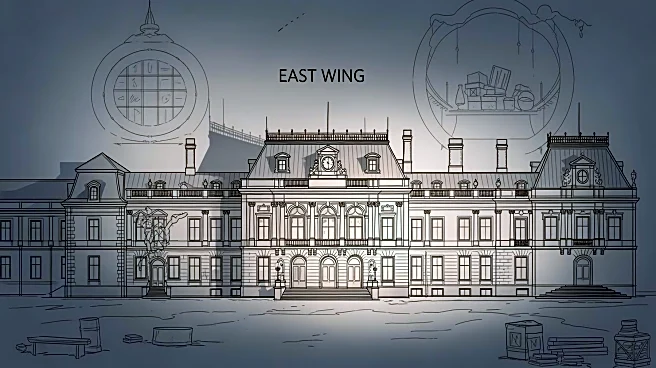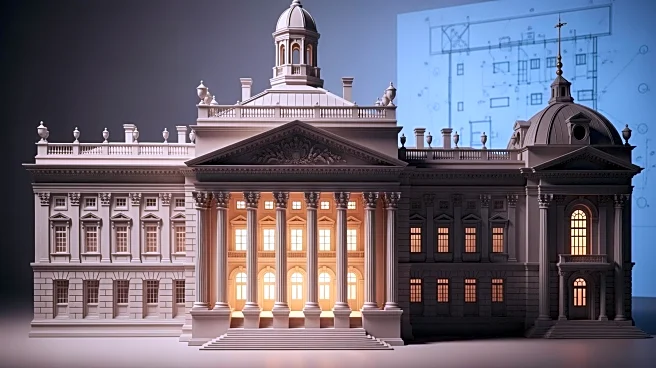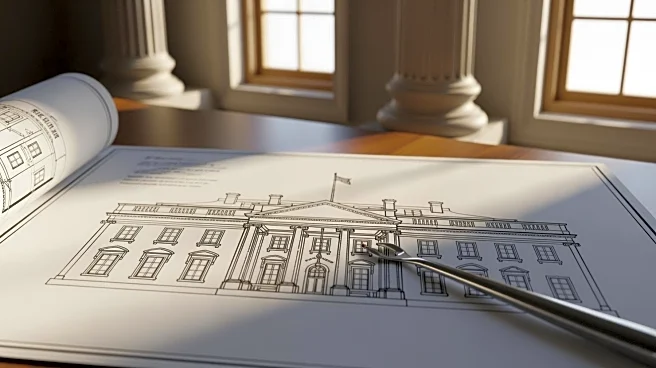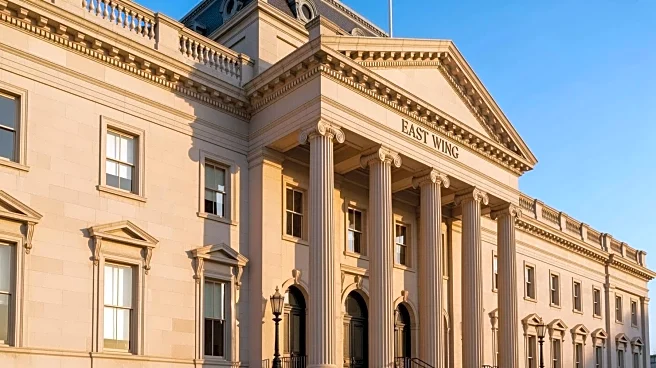What's Happening?
The Trump administration is set to demolish the entire East Wing of the White House to construct a new ballroom. This decision marks a significant expansion from President Trump's earlier statements that the project would not interfere with the existing
building. The ballroom, expected to host up to 900 people, is part of a $300 million project funded by Trump and private donors. The National Trust for Historic Preservation has expressed concerns, urging a pause in demolition until the plans undergo public review processes. Despite these concerns, the White House maintains that historical components of the East Wing have been preserved and stored for future use.
Why It's Important?
The demolition of the East Wing raises significant concerns about historic preservation and the transparency of the administration's renovation plans. The project has sparked criticism from historians and political figures who argue that such changes should undergo public scrutiny. The ballroom's construction, funded privately, highlights the influence of private donations in government projects. This development could set a precedent for future administrations regarding the handling of historic sites and the role of private funding in public projects.
What's Next?
The White House plans to submit construction plans to the National Capital Planning Commission, although the timeline remains unclear due to the government shutdown. The demolition has already begun, prompting criticism from various stakeholders. The administration's approach to bypassing traditional review processes may lead to further political and public backlash. The outcome of this project could influence future policies on historic preservation and government transparency.
Beyond the Headlines
The decision to demolish the East Wing reflects broader themes of executive power and the balance between modernization and preservation. The project underscores the tension between private influence and public interest in government decisions. It also raises questions about the ethical implications of altering historic landmarks without comprehensive public consultation.
